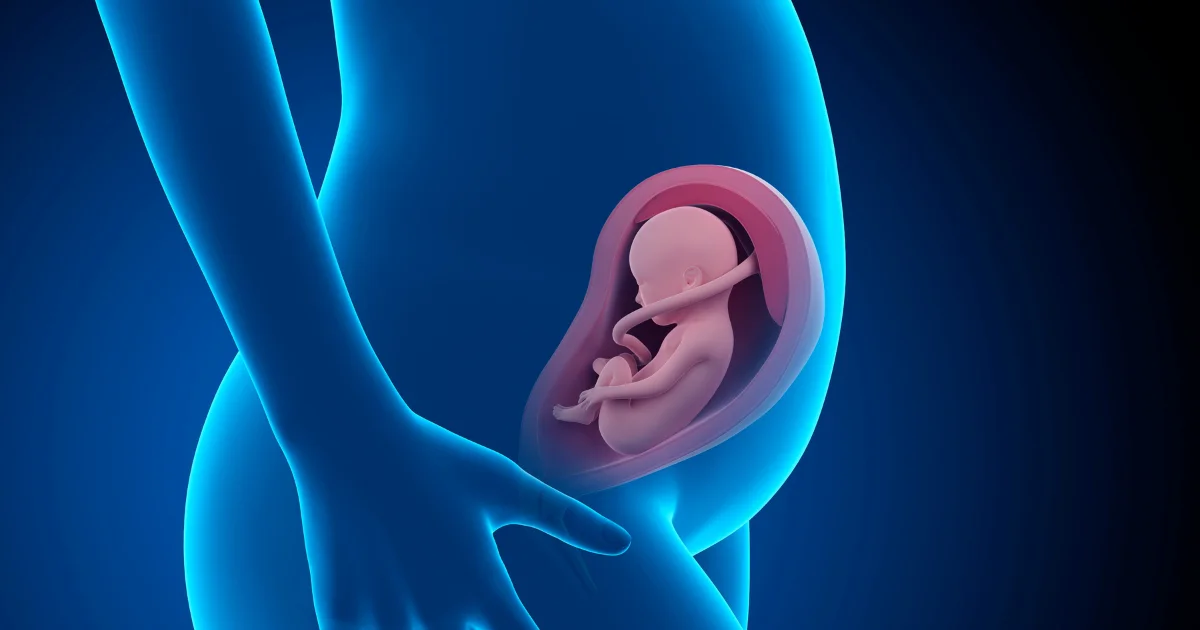Fetal monitoring during labor is a crucial aspect of obstetric care, providing valuable insights into the baby’s condition. This comprehensive guide aims to shed light on the importance, methods, and considerations of fetal monitoring during labor.
Table of Contents
What is Fetal Monitoring During Labor?
Fetal monitoring during labor is a crucial medical practice employed to assess the well-being and vital signs of the unborn baby throughout the birthing process. This monitoring aims to track the fetal heart rate and uterine contractions, providing valuable insights into the baby’s response to the stresses of labor. Fetal monitoring is typically conducted during both the antepartum (before labor) and intrapartum (during labor) phases, offering healthcare providers essential information to ensure the safety and health of both the birthing individual and the baby.
1. Antepartum Fetal Monitoring
- Non-Stress Test (NST): In the weeks leading up to labor, healthcare providers may use NST to assess the baby’s heart rate in response to its own movements. An accelerating heart rate indicates a healthy baby.
- Biophysical Profile (BPP): Combining ultrasound and NST, BPP evaluates various parameters, including fetal movement, breathing, muscle tone, amniotic fluid levels, and heart rate.
2. Intrapartum Fetal Monitoring
- External Monitoring: External monitoring involves placing sensors on the birthing individual’s abdomen to track the baby’s heart rate (electronic fetal heart rate monitoring or EFM) and uterine contractions.
- Internal Monitoring: In certain situations, internal monitoring may be utilized by placing a fetal scalp electrode directly on the baby’s scalp to measure the heart rate more accurately. Additionally, an intrauterine pressure catheter (IUPC) can be inserted to measure uterine contractions.
Primary Goals of Fetal Monitoring During Labor
- Assessing Fetal Well-being: Monitoring the baby’s heart rate provides crucial information about its well-being, helping healthcare providers identify potential distress.
- Guiding Interventions: Abnormalities in the fetal heart rate or patterns of contractions may prompt interventions such as changes in maternal positioning, administering fluids, or preparing for a cesarean section if necessary.
- Ensuring Safe Delivery: Continuous monitoring allows healthcare providers to respond promptly to any signs of fetal distress, minimizing the risk of complications during labor and delivery.
Fetal monitoring is a standard practice in modern obstetrics, providing an evidence-based approach to ensuring the health and safety of both the birthing individual and the baby. Continuous assessment and timely interventions guided by fetal monitoring contribute to improved outcomes and a safer childbirth experience.
Also read: A Guide to Reading Fetal Monitor Patterns: Decoding Contractions
Importance of Fetal Monitoring During Labor
Fetal monitoring during labor is a critical component of maternity care, offering valuable insights into the well-being of the unborn baby throughout the birthing process. This proactive approach allows healthcare professionals to assess the baby’s response to uterine contractions and ensures timely interventions if complications arise.
1. Real-Time Assessment: Fetal monitoring provides real-time information on the baby’s heart rate, allowing healthcare providers to promptly identify any signs of distress or irregularities during contractions.
2. Oxygenation and Perfusion: Monitoring helps gauge the adequacy of oxygenation and perfusion to the baby. Changes in heart rate patterns can indicate whether the baby is receiving sufficient oxygen, a crucial factor for overall well-being during labor.
3. Customized Care: Each labor is unique, and fetal monitoring allows for personalized care based on the baby’s responses to contractions. Healthcare providers can tailor interventions to address specific challenges, ensuring individualized attention.
4. Maternal-Fetal Bonding: Understanding the baby’s response to labor fosters a sense of connection and involvement for parents during this significant moment.
5. Reducing Neonatal Morbidity and Mortality: Early detection of potential issues through monitoring contributes to reducing neonatal morbidity and mortality rates. Prompt interventions can mitigate risks and enhance outcomes for both the baby and the mother.
Fetal monitoring during labor is an indispensable tool for ensuring the safety and well-being of both the baby and the mother. This proactive approach allows healthcare professionals to make informed decisions, provide timely interventions, and offer personalized care, ultimately contributing to positive birthing experiences and outcomes. The continuous advances in monitoring technology further enhance its effectiveness in safeguarding maternal and fetal health.
Types of Fetal Monitoring During Labor
Fetal monitoring during labor is a critical aspect of ensuring the well-being of both the mother and the baby. Various types of fetal monitoring methods are employed by healthcare professionals to assess the progress of labor and promptly identify any signs of distress.
1. Electronic Fetal Monitoring (EFM)
- Description: EFM involves placing sensors on the mother’s abdomen to monitor uterine contractions and the baby’s heart rate.
- Purpose: It provides continuous real-time data, allowing healthcare providers to assess fetal well-being throughout labor.
- Advantages: Non-invasive and suitable for most pregnancies.
2. Tocodynamometry
- Description: Tocodynamometry measures uterine contractions by placing a tocodynamometer on the mother’s abdomen.
- Purpose: It aids in understanding the frequency and intensity of contractions, helping assess the progress of labor.
- Advantages: Non-invasive and provides valuable information on uterine activity.
3. Doppler Ultrasound
- Description: Doppler ultrasound detects and monitors the baby’s heart rate by using sound waves.
- Purpose: It offers a non-invasive method for assessing fetal well-being during labor.
- Advantages: Provides continuous information on the baby’s heart rate and is suitable for various labor scenarios.
4. Fetal Scalp Electrode (FSE)
- Description: FSE involves attaching a small electrode directly to the baby’s scalp to monitor the heart rate more accurately.
- Purpose: This internal monitoring method provides precise and continuous data, especially in situations where external monitoring may be challenging.
- Advantages: Offers a more accurate assessment of the baby’s heart rate.
5. Intrauterine Pressure Catheter (IUPC)
- Description: IUPC is a thin tube inserted into the uterus to measure the strength of contractions.
- Purpose: It provides more accurate information about uterine activity, aiding in the assessment of labor progression.
- Advantages: Offers direct measurement of intrauterine pressure.
6. Amniotic Fluid Assessment
- Description: Internal monitoring allows healthcare providers to assess the clarity and volume of amniotic fluid.
- Purpose: Changes in amniotic fluid levels can indicate potential issues, and internal monitoring provides a direct way to evaluate this parameter.
- Advantages: Direct assessment of amniotic fluid conditions.
The choice of fetal monitoring methods during labor depends on the specific circumstances of each pregnancy and the clinical judgment of healthcare professionals. The integration of these various monitoring techniques enables a comprehensive evaluation of fetal well-being, facilitating timely interventions and personalized care for both the mother and the baby.
Assessing Fetal Heart Rate Considerations

Assessing fetal heart rate (FHR) during labor is a crucial component of prenatal care to ensure the well-being of both the mother and the baby. Various methods are employed by healthcare professionals to monitor FHR, allowing them to respond promptly to any signs of distress.
- Baseline Fetal Heart Rate: Normal baseline FHR typically ranges between 110 and 160 beats per minute.
- Variability: Fluctuations in the FHR, known as variability, indicate a healthy nervous system. Reduced variability may signal potential issues.
- Accelerations: Sudden increases in the FHR, known as accelerations, are positive signs of fetal well-being.
- Decelerations: Decelerations, or decreases in FHR, maybe early, late, or variable, each carrying different implications for fetal health.
The continuous assessment of fetal heart rate during labor provides essential insights into the well-being of the baby. Healthcare professionals use a combination of monitoring methods to ensure a comprehensive evaluation, allowing for timely interventions and personalized care based on the specific needs of each pregnancy.
Contractions and Uterine Activity
Monitoring contractions and uterine activity during labor is a fundamental aspect of prenatal care, providing crucial insights into the progression of labor. Here are the key parameters considered in the assessment:
1. Frequency and Duration
- Definition: Frequency refers to the time between the beginning of one contraction and the start of the next.
- Importance: Monitoring these intervals helps healthcare providers gauge the regularity of contractions, a vital indicator of labor progression.
- Duration: The length of each contraction from the beginning to the end is monitored.
- Significance: Longer durations may indicate strong contractions, contributing to cervical dilation.
2. Intensity
- Categorization: Contractions are often categorized as mild, moderate, or strong.
- Assessment: This categorization reflects the strength of uterine contractions during labor.
- Clinical Relevance: Understanding contraction intensity assists healthcare professionals in assessing the effectiveness of labor and managing pain relief strategies.
3. Tocodynamometer
- Definition: A tocodynamometer is a device placed on the mother’s abdomen to measure changes in abdominal wall tension during contractions.
- Function: It provides a non-invasive means of monitoring uterine activity.
- Insight: By recording changes in tension, the tocodynamometer offers valuable information on contraction patterns without internal placement.
4. Assessment Considerations
- Evaluation Criteria: Healthcare providers assess the regularity and consistency of contractions to ensure effective labor progression.
- Dynamic Changes: Monitoring allows for the observation of dynamic changes in contraction patterns throughout the stages of labor.
- Clinical Decision-Making: Real-time data on frequency, duration, and intensity inform clinical decisions, aiding in the management of labor.
Monitoring the frequency, duration, and intensity of contractions, along with the use of tools like the tocodynamometer, provides healthcare teams with essential information to ensure a safe and successful labor experience. These assessments guide interventions and contribute to informed decision-making during the dynamic process of childbirth.
Patterns Indicating Progress During Labor

Monitoring patterns of contractions and uterine activity is a critical component of assessing labor progress. Distinct patterns emerge throughout the stages of labor, offering valuable insights into the advancement of childbirth. Here are key patterns indicating progress during labor:
1. Establishment of Regular Contractions
- Definition: The initial stage involves the establishment of regular contractions.
- Significance: Consistent contractions at regular intervals signify the onset of active labor.
- Progression Indicator: A shift from irregular contractions to a more predictable pattern suggests cervical dilation and effacement.
2. Increasing Frequency and Intensity
- Gradual Intensification: As labor progresses, contractions often become more frequent and intense.
- Cervical Dilation: Increased frequency and intensity contribute to the gradual dilation of the cervix.
- Clinical Observation: Healthcare providers monitor these changes to gauge the effectiveness of contractions in promoting labor advancement.
3. Acceleration of Cervical Dilation
- Steepening of the Curve: Progressing labor is characterized by a steeper curve in cervical dilation.
- Effacement: The cervix undergoes thinning (effacement) simultaneously with dilation.
- Clinical Assessment: Accelerated cervical changes indicate active labor and contribute to the anticipation of impending delivery.
4. Transition Phase
- Peak Intensity: The transition phase marks the peak of contraction intensity.
- Effacement Completion: Effacement is typically completed during this phase.
- Clinical Challenges: This intense stage presents challenges and requires close monitoring for maternal comfort and fetal well-being.
5. Descent of the Fetal Head
- Engagement: The fetal head engages in the pelvis, preparing for descent.
- Pelvic Pressure: Women often feel increased pressure in the pelvic region during this descent.
- Clinical Observation: Detecting the descent of the fetal head is a pivotal sign of progress towards delivery.
6. Consistent and Strong Contractions
- Sustained Strength: Contractions remain consistent and strong throughout the active phase of labor.
- Efficient Dilation: This pattern ensures efficient cervical dilation for the impending delivery.
- Clinical Confidence: Consistent and strong contractions instill confidence in the progression of labor.
Understanding these patterns allows healthcare providers to make informed decisions, provide appropriate interventions, and ensure a safe and supportive environment for both the birthing individual and the baby. Regular monitoring of contraction patterns serves as a guide for the dynamic process of labor, contributing to optimal maternal and neonatal outcomes.
Identifying Abnormal Patterns in Labor
While the progression of labor is marked by distinct patterns, it’s equally crucial to recognize abnormal patterns that may signal potential complications. Timely identification of deviations from the norm allows healthcare providers to implement interventions and ensure the well-being of both the birthing individual and the baby. Here are key indicators of abnormal patterns in labor:
1. Prolonged Latent Phase
- Definition: The latent phase involves early labor with mild contractions and cervical effacement.
- Concern: Prolonged duration may indicate challenges in the initiation of active labor.
- Clinical Response: Healthcare providers assess whether interventions are needed to expedite labor progression.
2. Arrested Active Phase
- Stalled Dilation: Arrested active labor refers to a halt in cervical dilation despite consistent contractions.
- Evaluation: Healthcare professionals evaluate potential causes such as cephalopelvic disproportion or fetal malposition.
- Interventions: Interventions, including position changes or augmentation, may be considered to resume progress.
3. Fetal Heart Rate Decelerations
- Variable or Late Decelerations: Patterns of fetal heart rate decelerations may suggest compromised oxygenation.
- Significance: Prompt evaluation is essential to identify and address factors impacting fetal well-being.
- Emergency Measures: Severe or persistent decelerations may necessitate urgent interventions, including cesarean delivery.
4. Inadequate Uterine Contractions
- Weak or Inefficient Contractions: Inadequate uterine contractions may impede cervical dilation and descent.
- Assessment: Healthcare providers assess contraction strength and frequency to determine if augmentation is required.
- Oxytocin Administration: Controlled oxytocin administration is a common intervention to enhance contractions.
5. Failure to Descend
- Fetal Head Stationary: Lack of descent despite strong contractions may signal failure to progress.
- Evaluation: Providers assess factors such as pelvic dimensions or fetal position hindering descent.
- Consideration of Alternatives: Alternative delivery methods, including instrumental delivery or cesarean section, may be considered.
6. Abrupt Changes in Fetal Heart Rate
- Significant Variability: Abrupt changes in fetal heart rate, especially sudden bradycardia, demand immediate attention.
- Emergency Response: Healthcare providers initiate rapid evaluation to address potential causes and safeguard fetal well-being.
- Emergency Delivery: In extreme cases, emergency delivery measures may be initiated to prevent adverse outcomes.
7. Uterine Hyperstimulation
- Excessive Contractions: Hyperstimulation involves overly frequent and prolonged contractions.
- Risks: Prolonged contractions can compromise fetal oxygenation and necessitate prompt intervention.
- Management: Reducing oxytocin infusion or administering tocolytic medications may be employed to manage hyperstimulation.
8. Failure to Progress in the Second Stage
- Protracted Descent or Crowning: Lack of descent or prolonged crowning during the second stage may indicate challenges.
- Assessment: Healthcare providers assess factors hindering progress and consider alternative delivery methods.
- Patient Positioning: Adjusting maternal positioning or providing instrumental assistance may be beneficial.
Timely recognition of abnormal patterns empowers healthcare providers to tailor interventions, ensuring the safest possible outcome for both the birthing individual and the baby. Regular and vigilant monitoring allows for proactive management and supports the goal of a positive birthing experience.
Positioning for Optimal Monitoring
- Comfortable Positioning: Ensuring the mother’s comfort and the optimal placement of monitoring devices contributes to accurate readings.
- Adjustments as Needed: Healthcare providers make adjustments based on the progress of labor and the mother’s preferences.
Continuous vs. Intermittent Monitoring
- Continuous Monitoring: In high-risk situations or during certain medical interventions, continuous monitoring may be necessary.
- Intermittent Monitoring: In low-risk situations, intermittent monitoring allows for flexibility and mobility during labor.
Postpartum Evaluation in Labor
The postpartum period, also known as the fourth stage of labor, extends from the delivery of the baby to the first few hours afterward. This phase is a critical time for healthcare providers to monitor the birthing individual’s well-being, assess for potential complications, and provide necessary interventions. Here are key aspects of postpartum evaluation in labor:
1. Uterine Contractions and Fundal Height
- Expected Changes: Uterine contractions continue postpartum, aiding in placental expulsion and reducing bleeding.
- Monitoring: Healthcare providers assess the fundal height to ensure proper involution and contraction of the uterus.
- Interventions: Massage or uterotonic medications may be administered if uterine atony is observed.
2. Vaginal Bleeding
- Normal Discharge: Postpartum bleeding, termed lochia, is expected and progresses from bright red to a lighter color.
- Assessment: Healthcare professionals monitor the amount and color of lochia to detect signs of excessive bleeding.
- Interventions: Addressing uterine atony or retained placental fragments may be necessary if bleeding is excessive.
3. Vital Sign Stability
- Blood Pressure and Pulse: Continuous monitoring of vital signs helps identify signs of postpartum hemorrhage or other complications.
- Observation: Providers observe for signs of hypovolemia or shock and intervene promptly if abnormal vital signs are detected.
4. Pain Management
- Assessment of Discomfort: Monitoring the birthing individual’s pain levels helps in providing appropriate pain management.
- Medication Administration: Analgesics or non-pharmacological interventions may be offered based on the individual’s preferences and pain levels.
5. Perineal Assessment
- Tissue Integrity: Healthcare providers assess the perineum for lacerations, bruising, or hematoma formation.
- Suturing: Repair of perineal lacerations may be necessary, and providers ensure proper wound care.
6. Bladder Function
- Voiding Ability: Monitoring the ability to void postpartum helps identify potential urinary retention.
- Assistance: Catheterization may be considered if the birthing individual has difficulty voiding.
7. Initial Breastfeeding Assessment
- Latch and Positioning: Observing the initial breastfeeding attempts helps identify challenges and provide guidance.
- Lactation Support: Healthcare providers offer assistance and resources for successful breastfeeding.
8. Hemodynamic Stability
- Monitoring Blood Loss: Assessing blood loss and signs of hypovolemia is crucial for maintaining hemodynamic stability.
- Interventions: Fluid resuscitation or blood transfusion may be initiated if indicated.
Postpartum evaluation is a comprehensive process that involves monitoring physical, emotional, and psychological aspects of the birthing individual’s recovery. Regular assessments and timely interventions contribute to a smooth transition into the postpartum period and optimize the overall postpartum experience.
Final Words
Fetal monitoring during labor is a dynamic and essential aspect of obstetric care. The insights gained through monitoring contribute to safe deliveries and positive birth experiences. Expectant parents are encouraged to actively engage with healthcare providers, ask questions, and participate in decisions to ensure a collaborative and supportive approach to labor and childbirth.




